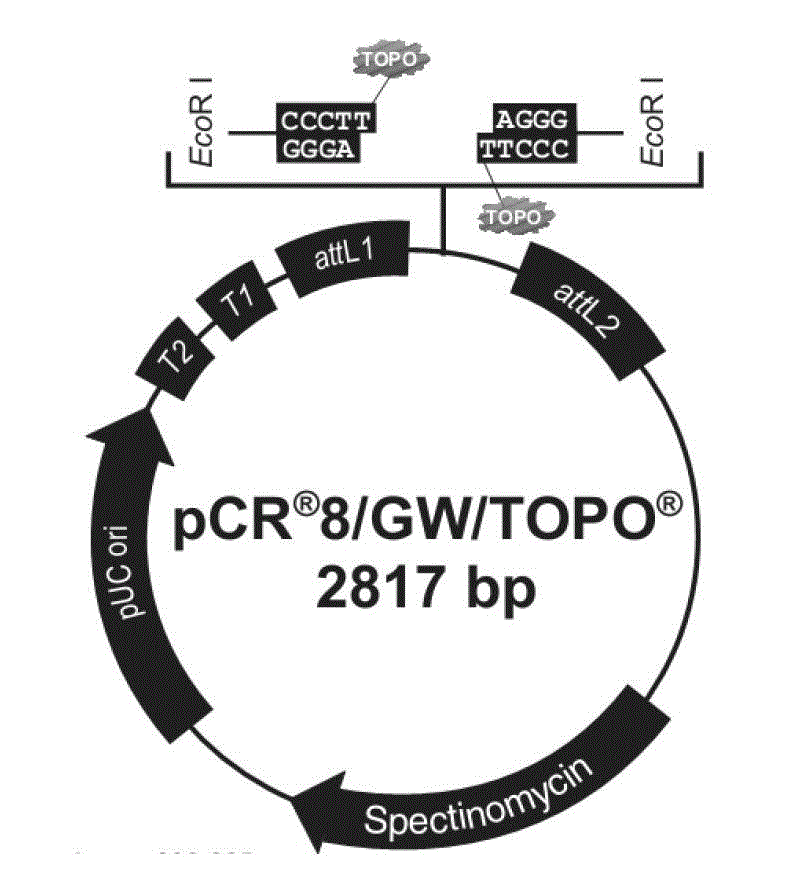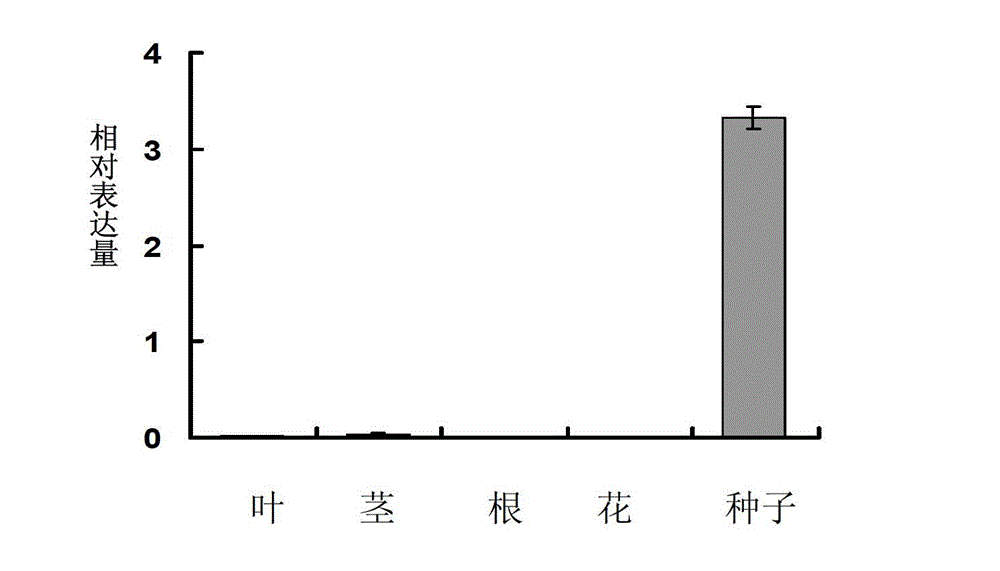Protein GmZF 392 derived from soybeans and applications of related biomaterials in regulation and control of plant fat
A plant and protein technology, applied in the application field of regulating vegetable oils, can solve problems such as little known
- Summary
- Abstract
- Description
- Claims
- Application Information
AI Technical Summary
Problems solved by technology
Method used
Image
Examples
Embodiment 1
[0067]Example 1, cDNA cloning of the GmZF392 encoding gene related to regulation of soybean lipid metabolism and construction of plant expression vector
[0068] 1. Cloning of protein GmZF392 gene and construction of plant expression vector
[0069] Total RNA was extracted from Heinong 44 seedlings, and the RNA was reverse-transcribed with reverse transcriptase to synthesize cDNA.
[0070] According to the information of GmZF392 full-length cDNA sequence in the soybean genome sequence of PlantGDB, design primers, the primer sequences are as follows:
[0071] GmZF392-up: 5'-ATGAGCAGTGTCTGTGCCA-3';
[0072] GmZF392-dp: 5'-TTACATCAGCAACTCGTTCACC-3'.
[0073] Using HN44cDNA as a template and using GmZF392-up and GmZF392-dp as primers, PCR amplification was performed to obtain a PCR product of about 1Kb. After sequencing, the PCR product is 1179bp, its nucleotide sequence is SEQ ID No.1, the DNA molecule shown in the nucleotide sequence is the GmZF392 gene (GmZF392), the protein...
Embodiment 2
[0082] Embodiment 2, the acquisition of transgenic GmZF392 Arabidopsis
[0083] 1. Obtaining recombinant Agrobacterium
[0084] The recombinant vector pGWB412-GmZF392 containing GmZF392 obtained in Example 1 was introduced into Agrobacterium tumefaciens GV3101 by electroporation to obtain recombinant Agrobacterium GV3101 / GmZF392 containing pGWB412-GmZF392.
[0085] 2. Obtaining and identification of transgenic GmZF392 Arabidopsis
[0086] The recombinant Agrobacterium GV3101 / GmZF392 was cultivated to the logarithmic phase, and then transformed into Arabidopsis thaliana (col-0) by vacuum method. The seeds were purchased from Arabidopsis Biological Resource Center (ABRC). Seeds harvested after cultivation (T 1 generation), the seeds were sown on the MS selection medium containing kanamycin (50mg / L), and the T 1 When the generation plant grows to 4-6 leaves, it is moved to the vermiculite to grow, and the harvest T 1 The seeds of each individual plant were sown separately, an...
PUM
 Login to View More
Login to View More Abstract
Description
Claims
Application Information
 Login to View More
Login to View More - R&D
- Intellectual Property
- Life Sciences
- Materials
- Tech Scout
- Unparalleled Data Quality
- Higher Quality Content
- 60% Fewer Hallucinations
Browse by: Latest US Patents, China's latest patents, Technical Efficacy Thesaurus, Application Domain, Technology Topic, Popular Technical Reports.
© 2025 PatSnap. All rights reserved.Legal|Privacy policy|Modern Slavery Act Transparency Statement|Sitemap|About US| Contact US: help@patsnap.com



